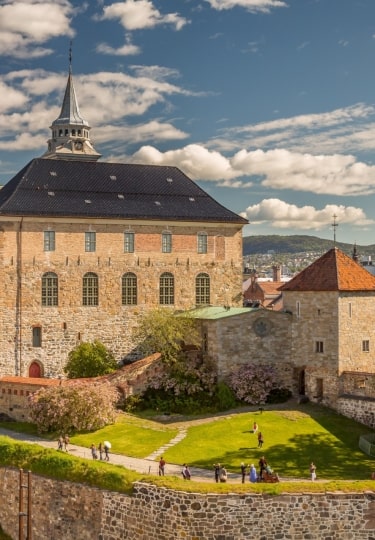There’s nothing quite like walking through a historic castle and imagining how it must feel to be royal, or live in such style. Luckily, Norway has countless castles and fortresses where you can let your imagination go wild at the same time as learning about the building’s historical context.
Some of Norway’s many castles are in city centers, while others are set in beautiful countryside and others still occupy strategic defensive positions along the fjord-indented coast.
From fortresses built in the 13th century to private residences and palaces fit for a king or queen, these 10 castles will give you an insight into Norwegian nobility, military history, art, and architecture.
Gamlehaugen, Bergen
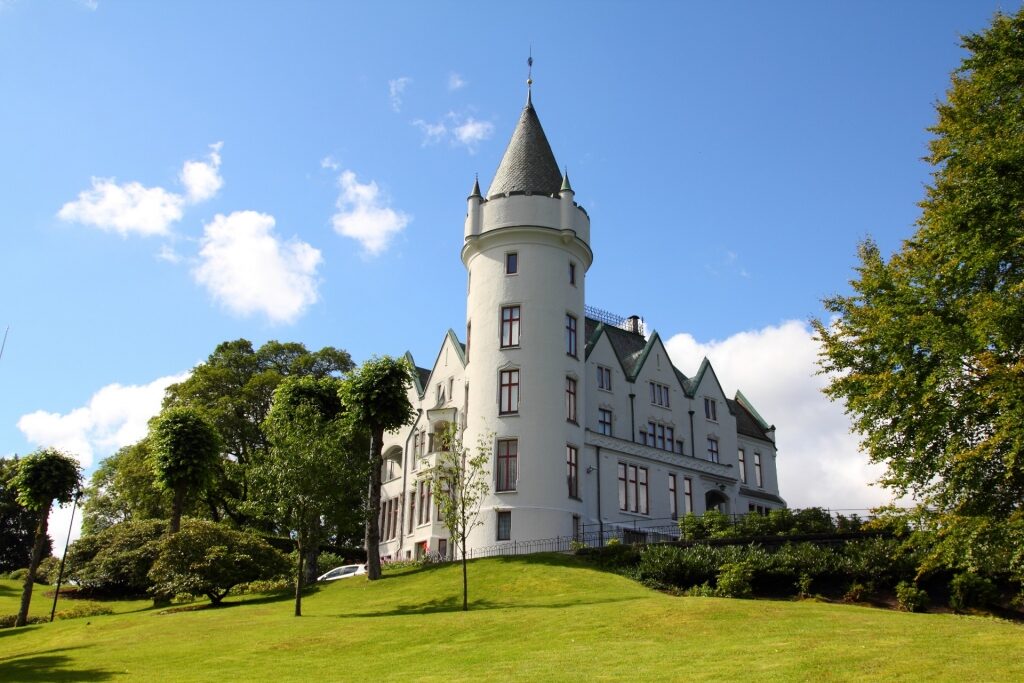
Gamlehaugen, Bergen
Gamlehaugen is the King’s official residence in Bergen. The residence itself is located just outside the city center, near Troldhaugen, where you can also visit the house of composer Edvard Grieg as part of a day trip. The residence is set in an English-style landscaped park, complete with shrubs, flowers, and towering trees.
Architect Jens Zetlitz Monrad Kielland designed Gamlehaugen in 1899 and was influenced by an eclectic range of styles; if you’re looking for a fairytale castle in Norway, this could be the one.
You’ll see the high, pointed tower reminiscent of castles in Scotland, as well as flourishes based on the 16th-century castles along the Loire river in France, and more modern art nouveau adornments.
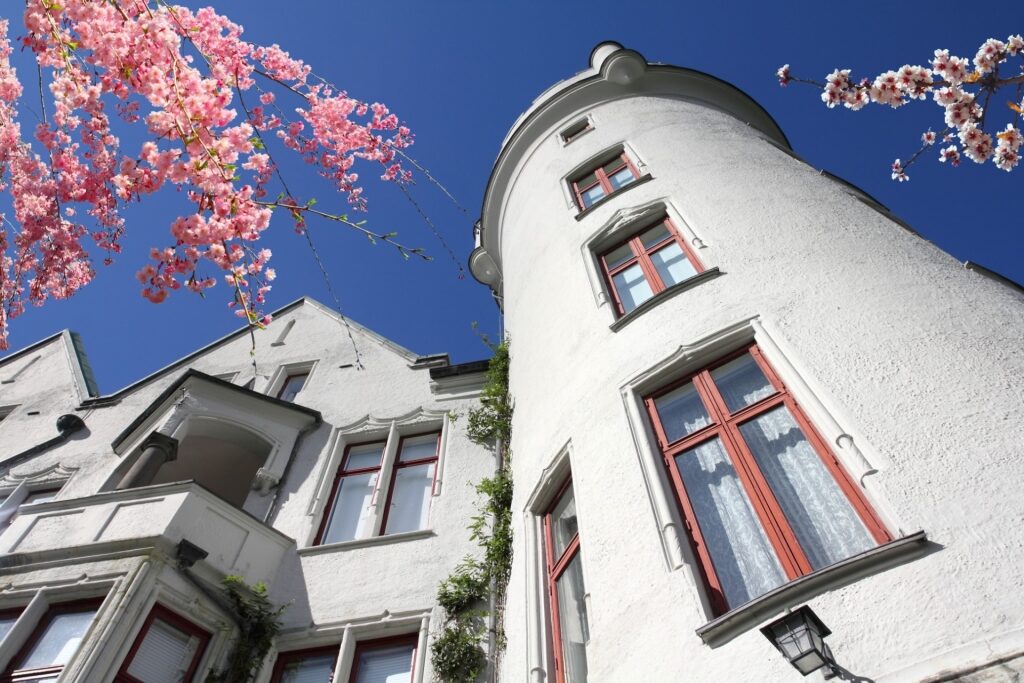
Gamlehaugen, Bergen
Gamlehaugen was actually privately owned for a time; it was bought in 1898 by shipping magnate and politician Christian Michelsen and then acquired by the state after Michelsen’s death in 1925.
The building is open to the public during the summer months. Entrance includes access to the state rooms on the ground floor, including Christen Michelsen’s office.
Bergenhus Fortress, Bergen
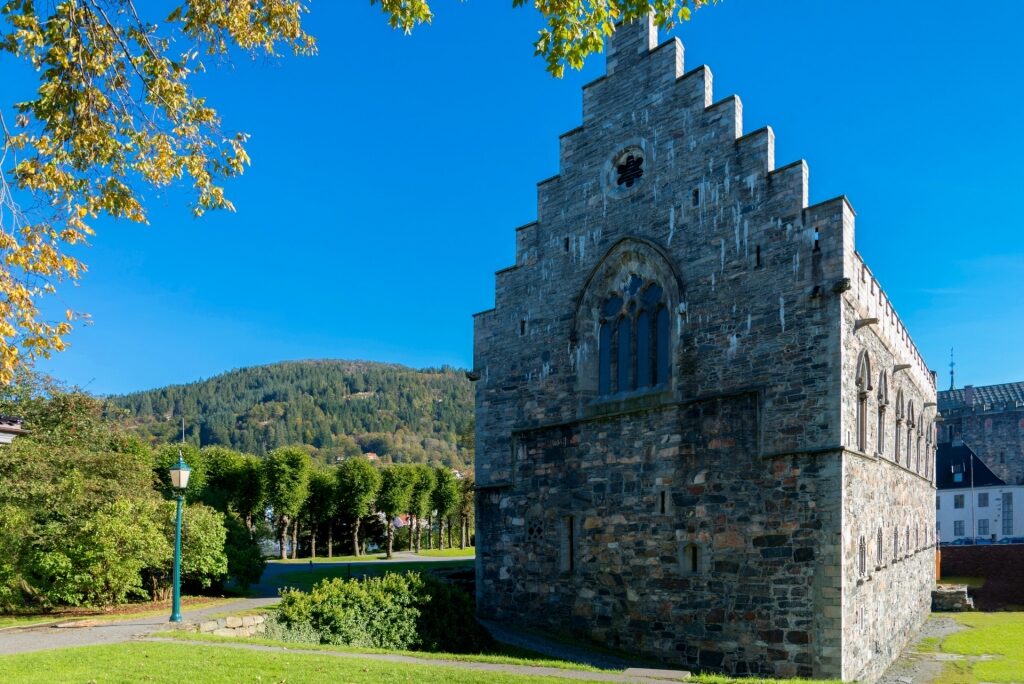
Bergenhus Fortress, Bergen
Guarding the entrance to the city’s harbor, visiting the imposing Bergenhus Fortress is one of the best things to do in Bergen, with its long history dating back to the early sixteenth century.
The structure in its various forms has been occupied by the military almost continuously since 1628 and even today, some 220 military and civilian Norwegians work here.
The fortress played a significant role in the Battle of Vågen (the bay on which it stands) in 1665, when it was attacked by English warships, putting up a robust defense.
The Germans used the fortress as their western headquarters during their occupation of Norway in World War II, causing considerable damage to the old buildings in an accidental explosion in 1944. The reconstruction work after the war took until the 1960s.
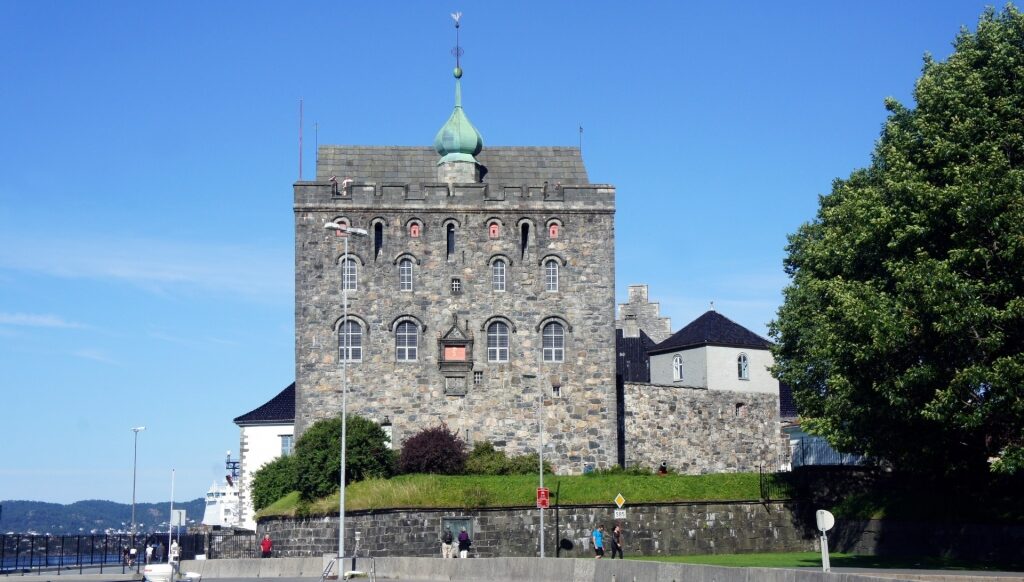
Bergenhus Fortress, Bergen
Today, Bergenhus serves as a venue for various events throughout the year, including outdoor opera, Norwegian food and beer festivals, and big concerts.
In fact, every summer the Bergenfest music festival takes over the grounds for an entire weekend. It’s also a nice spot to escape the bustling city feel of Bergen and have an impromptu picnic.
Akershus Castle and Fortress, Oslo
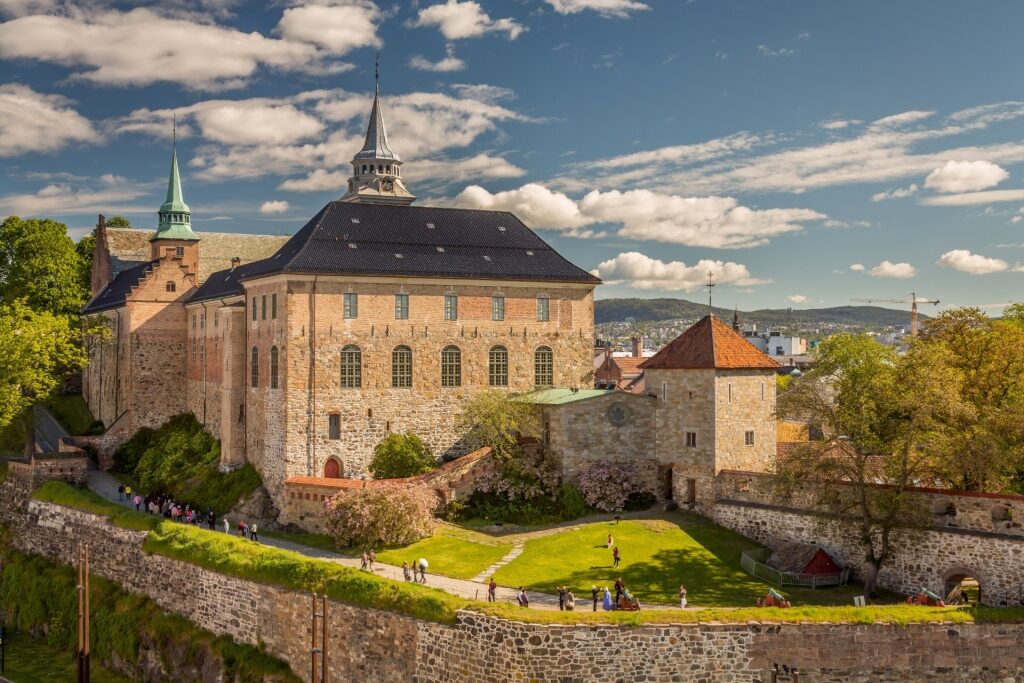
Akershus Castle and Fortress, Oslo
Oslo is home to several magnificent castles in Europe, and the extensive complex of Akershus is one of them. Built on a headland by King Håkon V in 1299 and overlooking what’s grown to be the modern city, Akershus has served in its defense of Oslo and later, in the Renaissance era, as a royal residence.
The medieval castle was also used as a prison by the Germans in World War II, like many of Norway’s military installations. Today, Akershus Castle features the Royal Mausoleum (where members of the Norwegian royal family are buried), banquet halls, and a historic church.
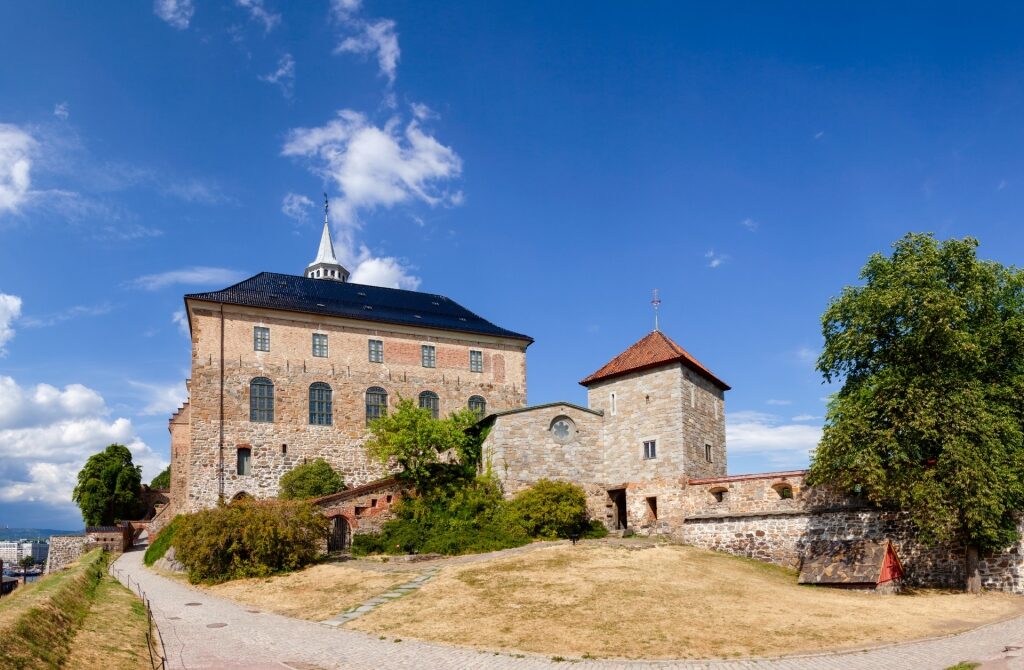
Akershus Castle and Fortress, Oslo
There are also two museums: the Armed Forces Museum, which focuses on the castle from the medieval times through World War II, and the Resistance Museum. Guided tours start from the visitor center in the fortress.
Read: Things to Do in Oslo
Royal Palace, Oslo
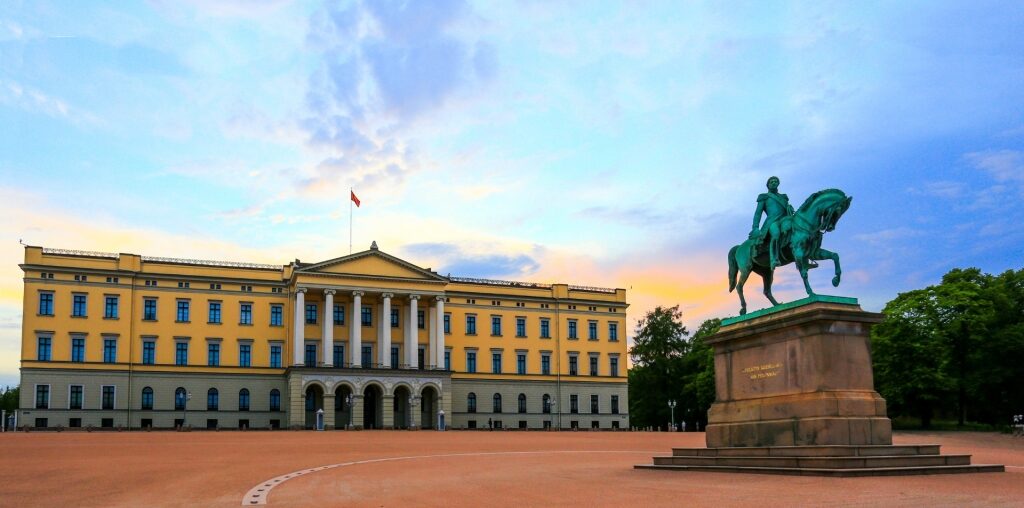
Royal Palace, Oslo
The neoclassical Royal Palace in Oslo is one of the best places to visit in Norway and a symbol of modern Norwegian history. Construction began in 1824, with the first foundation stone being laid by King Carl Johan some months later.
As with other royal palaces around the world, this is where the King and Queen of Norway live, and where the King holds official events and dinners. Daily work of the monarchy is also conducted within the royal palace.
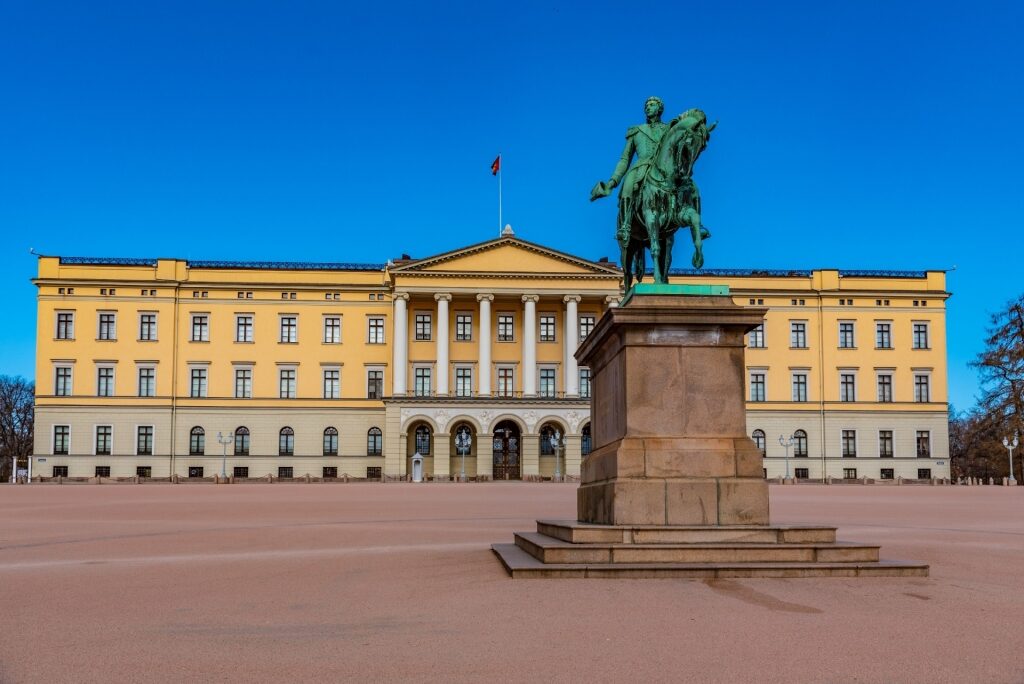
Royal Palace, Oslo
Most of the members of the Royal Court have offices within the palace, so visits to the public are limited to the summer season. One of the best things to do in Norway for visitors is to follow a guided tour that weaves through ornate state rooms and new exhibitions unveiled each year.
You’ll see the Bird Room, decorated like a summer garden, with birds and butterflies adorning the walls. This is where guests of His Majesty The King wait to be seen.
The Ballroom is the Palace’s most lavish room, all gold and white, with sky-blue ceilings and columns of white stucco marble. The tour also includes the Banqueting Hall, with oak parquet flooring, ethereal designs, and images of Greek gods and goddesses on the walls. More than 200 people dine here on state occasions.
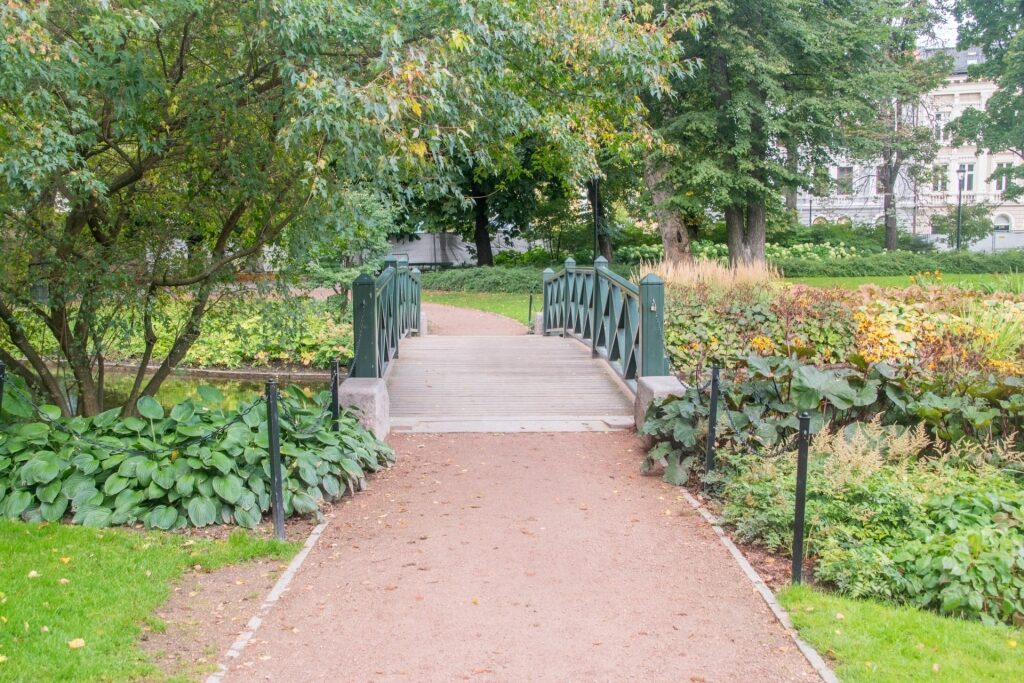
Palace Park in Royal Palace, Oslo
Don’t leave without taking a scenic stroll through the Palace Park. As one of Oslo’s first and largest parks, it’s very well-maintained. Within the Palace Park is the Queen’s Park, which was first created in 1751 as a private garden.
The Palance Park is open to the public year-round, and the Queen’s Park from May through October.
Oscarshall, Oslo
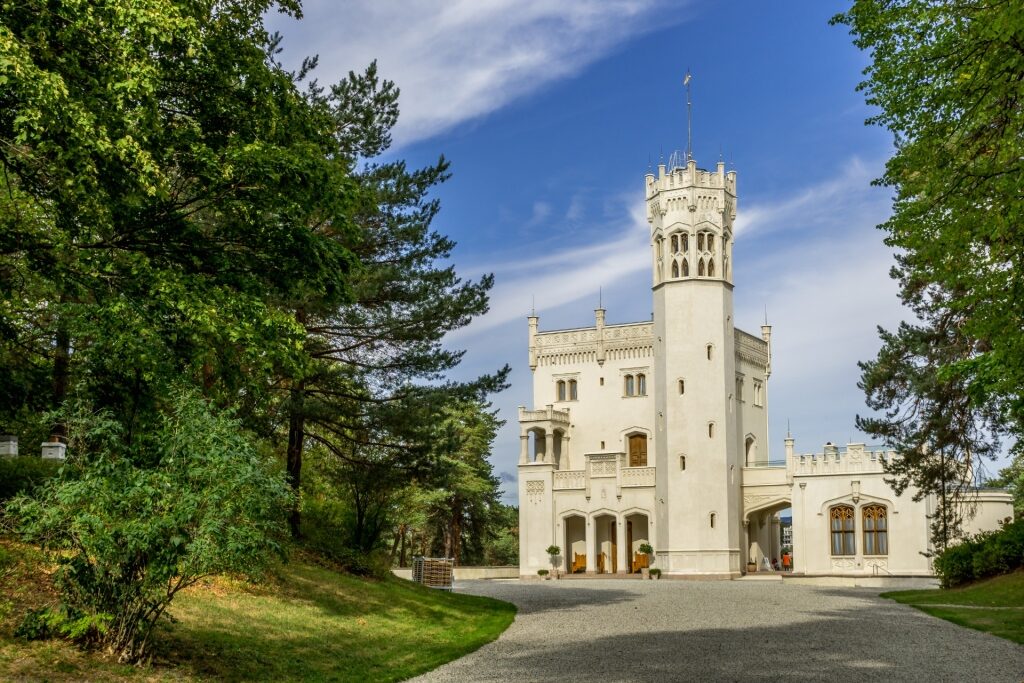
Oscarshall, Oslo
Located on the peninsula of Bygdøy in Oslo, the summer palace of Oscarshall, a confection of turrets, ornate balconies and a tall tower, features artwork from many revered Norwegian artists.
The palace was completed in 1852, after being commissioned by King Oscar I and Queen Joséphine. It still belongs to the state today and is one of the most dramatic Norwegian castles.
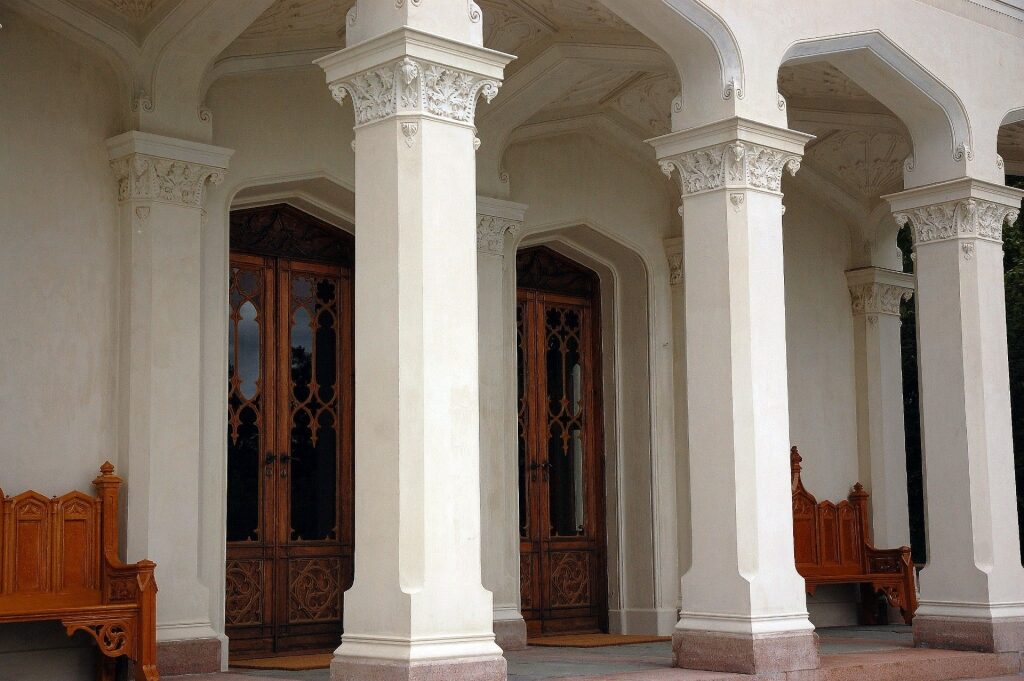
Oscarshall, Oslo Photo by Anne-Sophie on Flickr, licensed under CC BY 2.0
Those with an eye for architecture will find the facade as impressive as the interior. The palace, secondary buildings and park are considered great examples of neo-gothic architecture in Norway. You’ll also see aspects of the national romantic style that was popular in Norway during this period.
You can tour the reception rooms on the ground floor. The Vestibule is the first stop, painted in a startling shade of ultramarine blue, light filtering in through a stained-glass Gothic arch and a rose window.
You’ll also tour the elaborate Drawing Room, which overlooks the park and has the most beautiful stained glass windows and lush, red velvet wall paneling.
In the Dining Hall, there’s more stained glass, mirrored walls and impressive landscapes by Norwegian artists Joachim Frich and Adolph Tidemand completing the scene.
Fredriksten Fortress, near Oslo
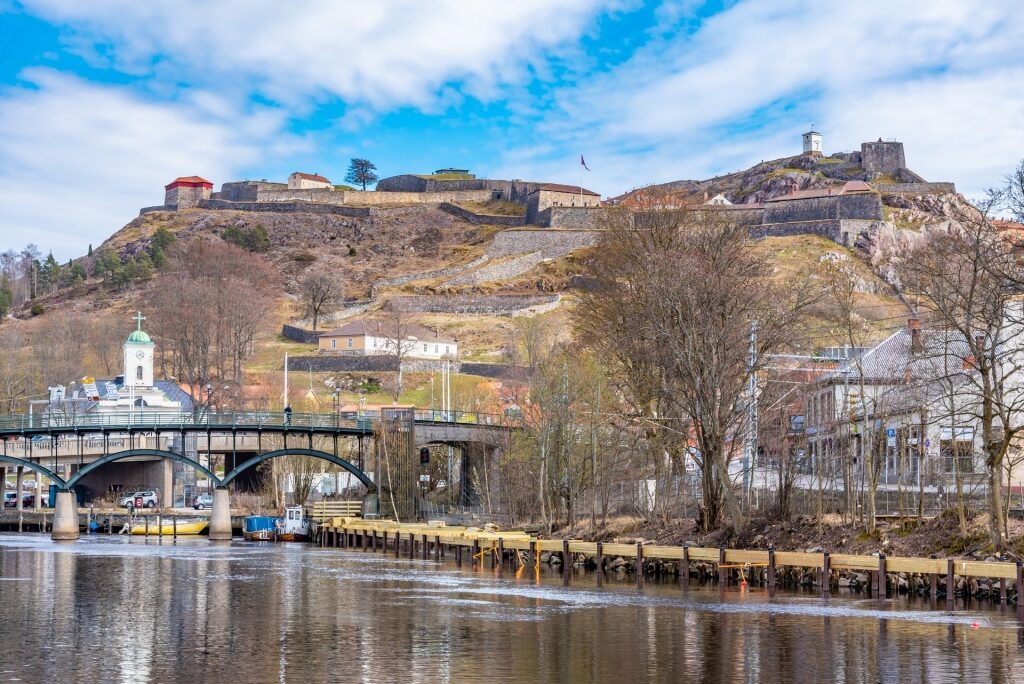
Fredriksten Fortress, near Oslo
Fredriksten is the country’s largest border fortress, and for many, it’s one of the most beautiful forts of its kind in Europe. Located above the town of Halden, around 90 minutes’ drive from Oslo, the fortress offers views of both the settlement below and the fjord.
Construction began in 1661 as a response to Norway losing the Bohuslän district and Bohus Fortress to Sweden three years prior.
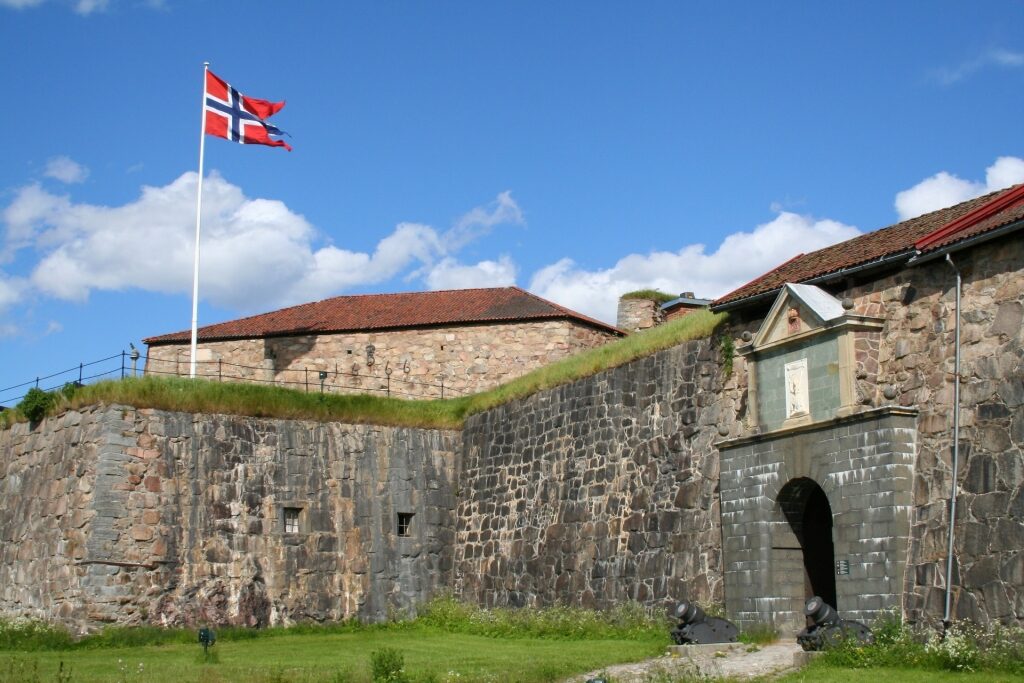
Fredriksten Fortress, near Oslo
There are a few ways to tour the Fredriksten fortress as a visitor. Activities range from nature trails through the slightly crumbling site to a ghost tour and multimedia show. On Sundays, there are guided tours that offer historical insight on the fortress’ construction and all that has happened since. Alternatively, you can opt for an audio guide and walk around the fortress at your own pace.
Within the fortress museums, you’ll learn the history of Halden as well as take a peek inside the bakery and brewery located inside the Inner fortress. Bakers had a tough job; they needed to feed 5,000 men every day, while the brewers were under pressure to produce 3,000 liters of light beer every day.
Castle Rock Tower, near Oslo

Castle Rock Tower, near Oslo
While not your average castle, Castle Rock Tower (its name is Slottsfjelltårnet in Norwegian) is, as its name suggests, a lone tower. The structure is located in a popular outdoor recreation area in Tønsberg, an hour and 20 minutes’ drive from Oslo.
The tower, built as an observation lookout in 1888, stands 56 feet tall, with sweeping views of the town below. Inside, you can see the original cross from the town’s Church of Our Lady, as well as inscriptions from three kings: King Hakon VII, King Olav V, and most recently, King Harald V.

Castle Rock Tower, near Oslo
Open seasonally, from May through September, the Castle Hill and Tower is family-friendly and ideal for anyone hoping to experience a bit of Norway’s green space and local culture.
The hill itself is the largest park of its kind in Scandinavia; you can still see ruins here from Castrum Tunsbergis, which was the largest castle in Norway during the 14th century. Although that castle was destroyed in 1503, many ruins remain, including the outer walls and watchtowers.
Egeberg Castle, Oslo

Egeberg Castle, Oslo Photo by Helge Høifødt on Wikimedia Commons, licensed under CC BY-SA 3.0
Egeberg Castle was once the biggest private residence in Oslo, commissioned by politician and businessman Einar Westye Egeberg.
Spanning 17,222 square feet over two floors, the mansion was set in an expansive park with views overlooking the Scandinavian city. Egeberg is relatively modern compared with some of Norway’s other castles; construction began in 1899 and was completed two years later.
Leading architect Halfdan Berle opted for an architectural style in line with Italian renaissance and used materials such as granite and soapstone to bring his vision to life. On the first floors were a hall, vestibule, dining room and kitchen, and a garden room. The second floor is where the bedrooms, dressing rooms, and bathroom were located.
Eventually, Westye Egeberg sold the property. After that, another two floors were added to the original building design. Today, it operates as an apartment building with 24 units.
While you won’t be able to tour the castle’s interior, the exterior is still very photo-worthy and commands fine views of the city.
Barony Rosendal, day trip from Bergen
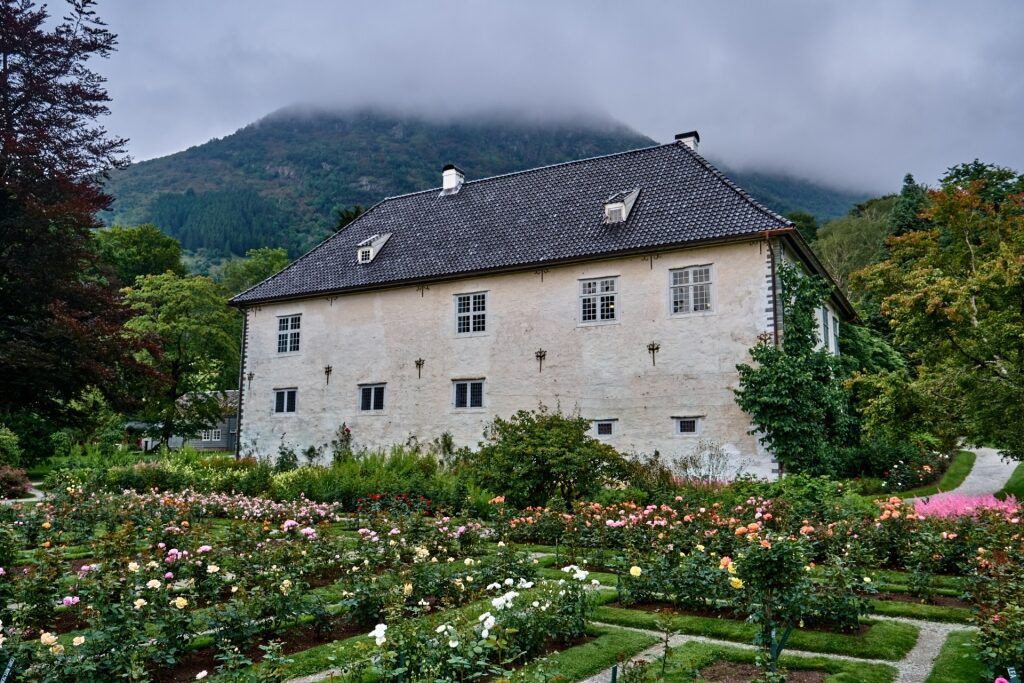
Barony Rosendal, near Bergen
This charming manor house, officially the smallest of the many castles in Norway, dates back to 1665 and is surrounded by fjords, glaciers, mountains, and waterfalls.
Aside from the dreamy locale, the story of how Barony Rosendal came to be is a romantic one. In 1658, a wedding between heiress Karen Mowat and a much poorer Danish nobleman took place.
The happy couple was given the farm Hatteberg as a wedding gift and from there, they built the manor into what it is today. The residence reached completion in 1665 and while the last owners left in 1927, the rooms have stayed true to their original designs.
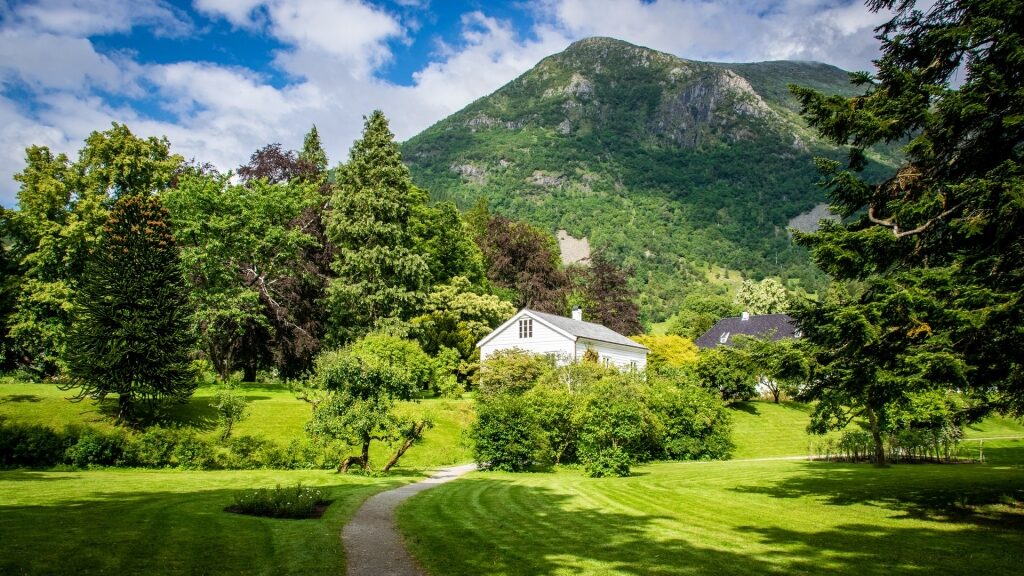
Barony Rosendal, near Bergen
What started as a farm when Ludvig Rosenkrantz and Karen Mowatt moved in grew into a beautiful Renaissance garden, as well as a rose garden and a kitchen garden.
As if that weren’t picture-perfect enough, you can see some of Norway’s mountains, like Malmangernuten, Melderskin and Laurdalstind in the distance, as well as the waterfalls Hattebergfossen and Hardangerfjorden.
The Barony is a delightful place to visit on a day trip from Bergen, with a stop for a meal in the café, which serves produce from the kitchen garden.
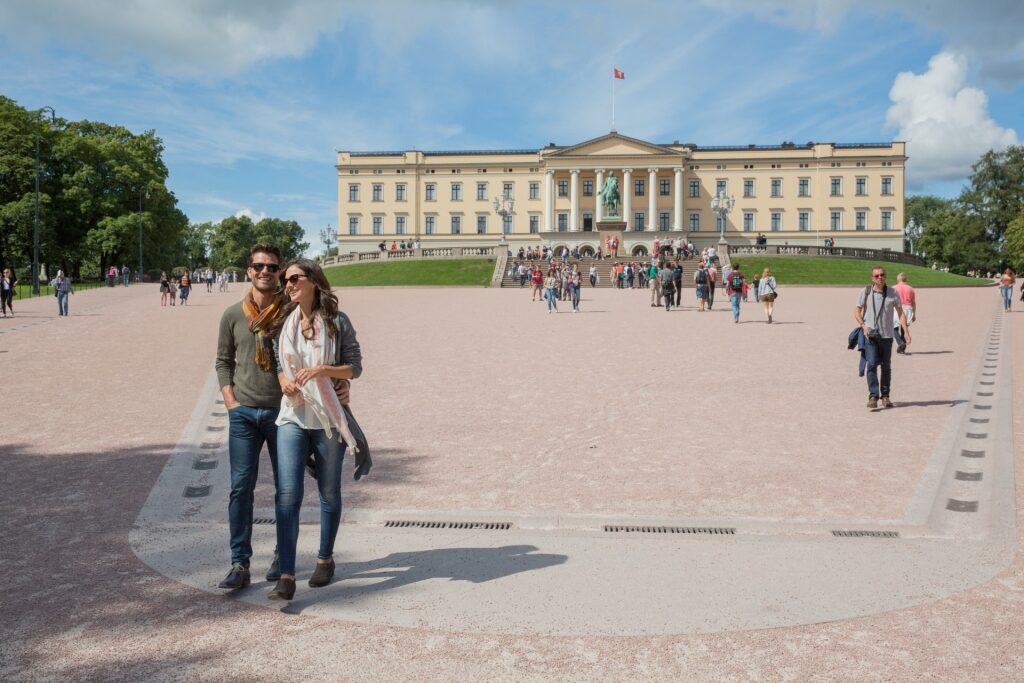
Royal Palace, Oslo
If you’re ready to explore all the history and beautiful architecture of the best castles and fortresses in the country, browse our cruises to Norway.
